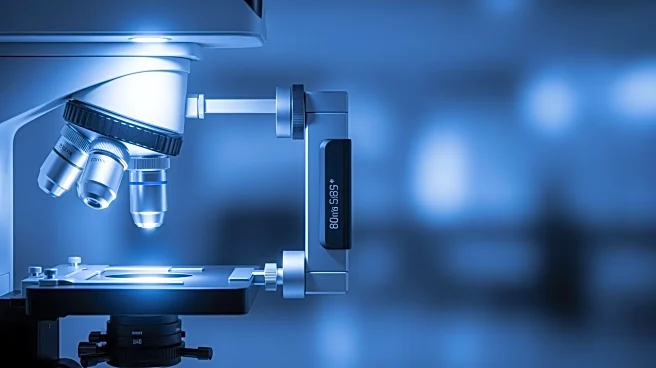What's Happening?
A new microscope technology developed by researchers at the University of Tokyo allows for the observation of micro- and nanoscale activity inside living cells without the use of dyes. This dual-light microscope combines quantitative phase microscopy
(QPM) and interferometric scattering microscopy (iSCAT) to capture detailed structures and tiny moving particles simultaneously. QPM visualizes structures at the microscale using forward-scattered light, while iSCAT detects structures as small as single proteins through back-scattered light. The integration of these technologies, referred to as bidirectional quantitative scattering microscopy (BiQSM), enables researchers to observe cellular behavior across a broad range of sizes and motions in a single image. The technology was tested by analyzing changes during cell death, allowing scientists to estimate particle size and refractive index.
Why It's Important?
The development of this microscope technology is a significant advancement in cellular imaging, offering a more comprehensive view of cellular processes without harming the cells. This has potential applications in pharmaceutical and biotechnology settings, where long-term imaging is crucial for testing and quality control. By providing insights into both micro and nano structures, the technology could lead to breakthroughs in understanding cellular mechanisms and disease progression. The ability to estimate particle size and refractive index enhances the precision of cellular analysis, which is vital for developing targeted therapies and improving diagnostic techniques.














